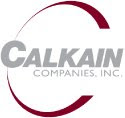
A recent article by M.P. McQueen in the Wall Street Journal stated that cap rates for investment grade triple net lease properties were falling. Specifically it said “in recent months, cap rates have been falling because property prices nationally are rebounding. More investors are going after fewer high-quality properties, driving prices up.” In order to gain a wider perspective on this topic, we asked two industry experts, who have capital available and are active in the market, their opinions on cap rate trends today and by years end.
Here are their responses:
Jon Adamo, National Retail Properties.
I would agree that over the last few months we’ve seen a decrease in cap rates of higher quality net lease investments in the range of 25 to 50bps from pricing we experienced in 2009. There’s definitely a supply and demand issue at the root of the adjustment along with an improvement in the ability of buyers to get the better tenants/deals financed. The scarcity of new deals hitting the market will continue to keep cap rates low for the remainder of the year and may cause them to go even a little lower but not significantly. The cost of financing is still very much a factor for many deals and although banks are doing very safe deals at very safe rates and terms they have certainly not opened their doors all the way.
If you look out past the next 6 months and into the next year I think caps will be moving up with rising interest rates. I also see more product reaching the market as developers begin to reemerge and M&A activity picks up thus producing some sale-leaseback opportunities for buyers that might look to dispose of some assets. For now it seems there’s a glut of capital for good Walgreens and McDonald’s-type NNN investments and not enough to go around putting stress on cap rates but higher rates and lower ltv’s of the new financing “norm” will cause the cap rates to rise eventually.
George Rerat, Senior Vice President of Acquisitions, AEI Fund Management, Inc.
We’ve seen cap rates for high quality NNN properties decrease from around 9.5% to 9.0% today. This drop is a reflection of the dwindling supply of high quality NNN properties on the market. Construction has been at a relative standstill and as such the pool of these assets has been shrinking, forcing cap rates down. By years end we could possibly see cap rates drop by another 50 basis points. Furthermore, it may take a while for construction to pick up again, prolonging the supply imbalance for the next 1-2 years.
So the question becomes whether or not the window is still open, as supply continues to constrict and the laws of economics take hold.





